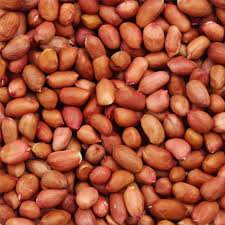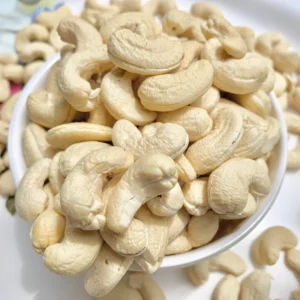Peanuts are an edible legume, from the same family as lentils and peas, that can be prepared by dry-roasting, boiling, and grinding into peanut butter. Peanuts can also be pressed to extract their oil.
What are Peanuts?
Peanuts are a type of legume with the botanical name Arachis hypogaea, which is a member of the family Fabaceae, along with peas, lentils and beans. Though they are eaten and used in the culinary arts in the same manner as nuts, such as almonds and hazelnuts, peanuts are not technically nuts.
Peanut Origins
Peanuts are believed to have originated in South America, where ancient pottery shaped like peanuts have been discovered. The Incas of Peru buried their dead with peanuts in their tombs, and cultures in central Brazil consumed a drink made from ground peanuts and maize.
European explorers brought the peanut back to Europe, where they later spread to Africa and Asia. It was enslaved Africans who carried peanuts to North America in the Trans Atlantic Slave Trade, where it became a commercial crop in the early 1800s. Agricultural scientist George Washington Carver encouraged farmers to plant peanuts in between cash crops, as peanuts had the property of replenishing the nitrogen in the soil.
How To Cook With Peanuts
Peanuts are widely used in a variety of cuisines, including African, Latin American, North American, and Asian. They can be made into candy, added to savory dishes, made into sauces, incorporated into salads, salad dressings, soups, stir-frys and braises. They can be ground into a flour and used as a coating for fried foods or in baking. In the form of peanut butter, peanuts are also widely used in desserts and baking and in making savory sauces and soups. They can also be candied by cooking them in a solution of sugar and water to coat them with a hard sugary shell.
What Do They Taste Like?
Most peanuts are dry roasted, and so their flavor has a toasted character, though the flavor of peanuts themselves is rather like that of a bean. However, because peanuts are roasted and often salted, they take on a fragrant roasted flavor as well as the flavor of the salt.
George Washington Carver
George Washington Carver was an American agricultural scientist who advocated the planting of peanuts, first as a way of replenishing the soil in between cash crops then as a nutritional food, based on the Native American practice of companion farming, what is now known as crop rotation. He collected and compiled1
George Washington Carver and the Peanut. American Heritage Magazine
numerous recipes for preparing peanuts, and is regarded as the father of the peanut industry. While he is often credited with inventing peanut butter, after the Incas and Aztecs, John Henry Kellogg was the first American to patent the process in 1895, some 23 years years before Mr. Carver’s research.2
Nutritional Value
A 100-gram serving of peanuts provides 567 calories along with 26 grams of protein, 49 grams of fat, 16 grams of carbs and 9 grams of fiber. Peanuts are an excellent source of B vitamins, including thiamine (B1), riboflavin (B2), niacin (B3), pantothenic acid (B5), vitamin B6, and folate (B9), along with several minerals, such as magnesium, manganese, phosphorus and zinc.3
Peanut Recipes
In addition to the recipes shown here, peanuts can also be used as a substitute in numerous recipes that call for nuts such as almonds, walnuts and hazelnuts.



Reviews
There are no reviews yet.